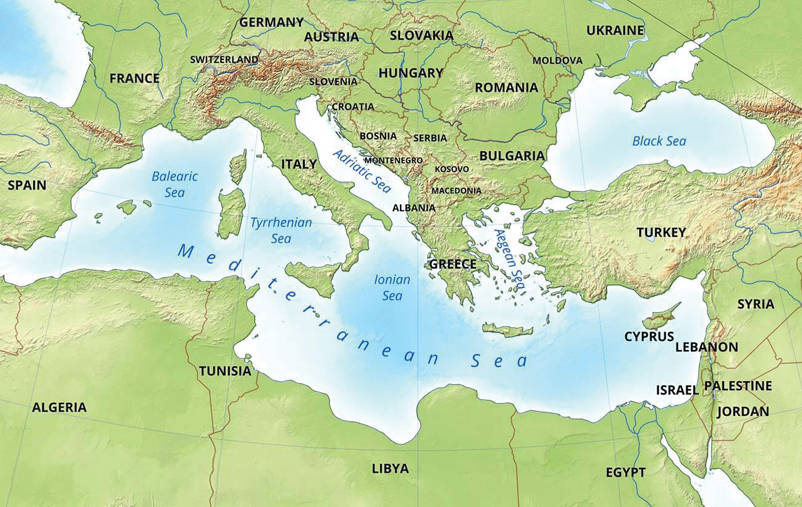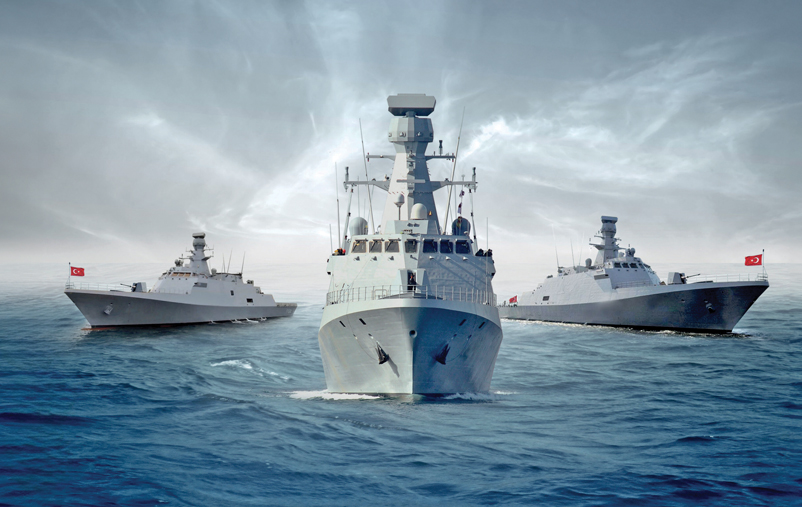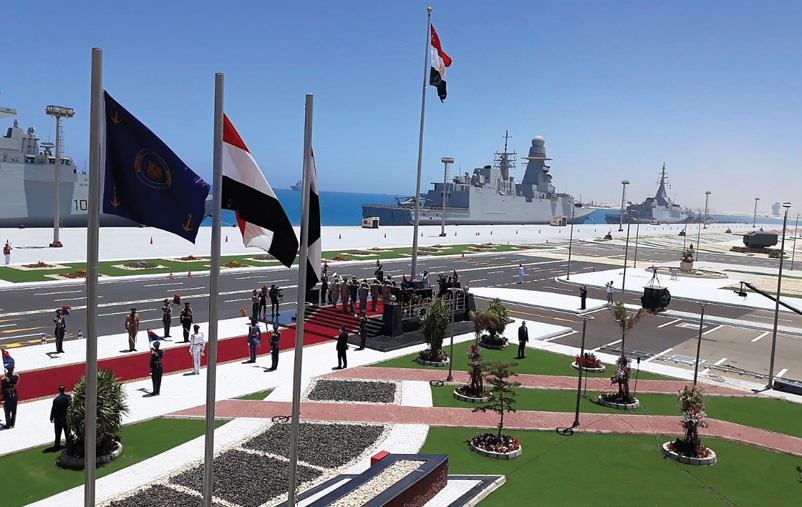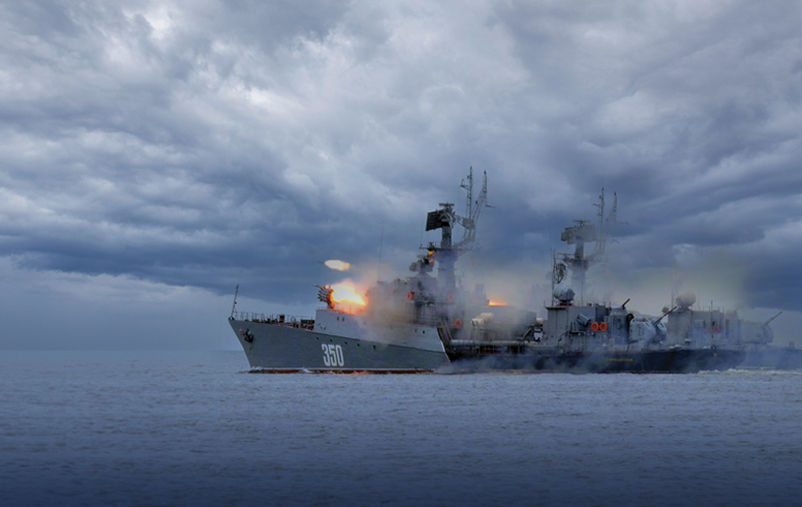When discussing the Mediterranean Sea, two integral yet distinct realities must be considered. The Mediterranean is a relatively small, almost enclosed sea, representing less than 1% of the Earth’s maritime expanse. It stretches from the Gibraltar to the Levantine coast. However, it closely relates to all the surrounding lands, forming a mosaic of nations, peoples, languages and religions, making the Mediterranean maritime space a complex geographic unit and a gathering of intersecting and conflicting interests.
Moreover, it serves as the meeting point of three continents (Asia, Africa, and Europe), three monotheistic religions, and rich and poor nations.

This human, political, cultural, religious, and economic mosaic has never been politically unified (except for a brief period under the Roman Empire). On the contrary, the region’s history reveals a continuous series of conflicts in various forms, pitting the east against the west, the north against the south, not to mention countless local conflicts.
Moreover, the Mediterranean Sea constitutes one of the most geopolitically significant spaces in international relations. This importance stems not only from its location at the crossroads of three continents but also as a passage connecting the Indian Ocean to the Atlantic, serving as an energy route and a vital artery for international trade.
Furthermore, approximately 25% of global maritime navigation and 30% of oil movements pass through the Mediterranean Sea. Recently, substantial gas reserves, especially in its eastern region, have been discovered.
The objective of this study is to provide insights into the increasing presence of naval forces in this complex space in recent years and identify future trends. To achieve this, the study is divided into two parts: the first sheds light on the context of the growing naval presence in the Mediterranean region. The second part analyses the aspects and trends of the increasing naval presence in the Mediterranean region (2024-2028).
Context of the Increasing Militarization of the Mediterranean
In this context, major powers view the Mediterranean as a vital region that cannot be left unmonitored, necessitating a continuous naval presence. Key indicators include:
1. Constant Presence of the U.S. Sixth Fleet: The continuous presence of the U.S. Sixth Fleet in the Mediterranean, along with its military bases in several countries in the region.
2. Russian Military Display and Presence: Russia’s significant military display in January 2008 in the Mediterranean, showcasing its enduring naval presence primarily through its base in the Syrian Tartus and its expansion in recent years.
3. Growing Chinese Maritime Presence: The increasing maritime presence of China since its naval forces evacuated 60,000 Chinese workers from Libya during the NATO intervention in the Arab Spring. This presence has grown further with the region’s participation in the Belt and Road Initiative and the significant growth of Sino-Moroccan economic and trade relations, especially with Algeria becoming China’s primary economic partner and the top importer of Chinese weapons in Africa.
4. Joint Military Exercises: Joint military exercises between Russia and China, initiated in 2015 in the Mediterranean.
The competition between China and the United States is palpable in the Mediterranean, primarily in the economic and influential domains. This is evident through China’s overall or partial impact on crucial Mediterranean ports, including Piraeus, Valencia, Comport, Malta, Tangier, and Genoa.
On the other hand, latent conflicts among some Mediterranean coastal states, occasional provocative stances by certain regional actors, the maritime consequences of the war in Ukraine, and the increasing challenges to Mediterranean security, such as terrorist groups, mercenaries, and illegal migration, have heightened tensions in the region.
For instance, in response to Iranian attempts to deploy submarines in Syrian ports, Israel reinforced its military presence in the Mediterranean, deploying advanced early warning systems, Iron Dome missile defence platforms, and patrol boats.
Additionally, Egypt established the (3 July) naval base in the Gergoub region of Matrouh governorate, serving as a focal point and launching centre for logistical support to Egyptian forces in the Mediterranean, addressing any challenges and risks in the region, particularly to protect the first nuclear power station near the base.

Aspects and Trends of Increasing Militarization in the Mediterranean (2024-2028)
Observers note the escalating pace of naval armament and the growing naval presence in the Mediterranean through notable examples, including:
1. Egypt’s Naval Acquisitions: Egypt’s recent acquisition of helicopter carriers, submarines, and multi-role frigates.
2. Algeria’s Fleet Upgrade: The modernization of Algeria’s fleet with frigates and submarines capable of launching cruise missiles.
3. Turkish Naval Strengthening: The enhancement of the Turkish fleet through the local construction of an aircraft carrier, several frigates, and the procurement of the latest generation of air-independent submarines from Germany.
Observations from the Previous Table:
1. Algeria, Türkiye, and Egypt, followed by Israel, are the countries in the Mediterranean Basin set to increase and renew their naval forces between 2024 and 2028.
2. Greece is anticipated to face a shortage or ageing of its naval fleet between 2024 and 2028, followed by France and Italy.
On the other hand, in 2024, the fleets of the Mediterranean Sea divided into two groups: those with an average age of less than 15 years (France, Algeria, Egypt, and Israel) and those with an average age ranging between 22 and 32 years (Italy, Spain, Türkiye, and Greece).
In 2028, four years from now, the trend towards renewal will accelerate, especially for the Italian fleet (reducing its average age by 11 years), the Turkish fleet (reducing its average age by 10 years), and the Spanish fleet (reducing its average age by 9 years), provided that the current acquisition and renewal programs are followed.
In general, within four years, the average age of combat fleets in the Mediterranean will decrease from 20 to 15 years.

Russia continues to solidify its position in the Mediterranean. In 2022, Moscow conducted massive exercises, overseen by Russian Defence Minister Sergei Shoigu, who inspected naval drills in the eastern Mediterranean from the Syrian port of Tartus.
According to Russian military expert Vladimir Gundarov, this has created a unique situation in the Mediterranean, hosting three carrier groups: one Italian carrier continuously operating in the region, while French and American carriers, both nuclear-powered, lead the other two groups.
Additionally, Russian missile ships arrived, conducting military manoeuvres with Algeria in the western Mediterranean by the end of 2023.
Furthermore, a joint operations centre was established, featuring officers from the Russian and Algerian navies, alongside a maritime headquarters for managing naval cooperation between the two sides.
Conclusion
The shortage or ageing of weapons in the fleets of Western Mediterranean countries and their allies, and the increase and renewal in the fleets of Eastern and Southern Mediterranean countries and their allies, do not necessarily imply a short or medium-term superiority of the latter over their Western counterparts.
For instance, heavy frigates with a payload exceeding 6000 tons, dedicated to anti-aircraft and anti-submarine warfare, are only present in the fleets of Western Mediterranean countries: France, Italy, and Spain (25 out of 28 today, and 32 out of 36 five years from now). Additionally, heavy frigates exceeding 6000 tons are only found in the US Navy (4 or 6 based primarily in Spain) and one British frigate in Gibraltar. None of the lighter frigates in other Mediterranean naval forces possess sensors and weaponry similar to those of heavy frigates.
As of now, the French, Italian, and Spanish navies alone constitute 40% of the leading ships in the Mediterranean fleets, 60% of the payload capacity, 90% of the heavy frigates, and 75% of the aircraft carriers, positioning them to secure the Mediterranean with relative ease, through joint patrols in this semi-enclosed sea and exercise a deterrent presence, provided Paris, Rome, and Madrid are in a state of close cooperation.
On the flip side, both the East and South of the Mediterranean possess A2AD capabilities and enhanced coastal defences.
Two-thirds of the attack submarines in the Mediterranean are in the fleets of Southern and Eastern Mediterranean countries. This means that while the naval forces of Eastern and Southern Mediterranean countries cannot challenge the fleets of Western Mediterranean countries and their allies in the high seas, they can easily deny them access to the Eastern Mediterranean by turning the area into a (lake) within the range of their coastal defences, submarines, and ground-attack fighters armed with anti-ship missiles.
Some Western observers believe that the Algerian coast and the Eastern Mediterranean may once again become perilous maritime areas for the naval fleets of Western Mediterranean countries and their allies. This is especially true when considering the presence of Russian Eskadra ships sailing in the Mediterranean, distinguished by their supersonic missiles, with the maritime impact of these missiles being ten times that of traditional missiles. This may tempt some Eastern and Southern Mediterranean countries close to Russia to acquire them, especially given the significant increase in military budgets for those countries in recent times.
» By: Professor Wael Saleh
(Expert at Trends Research & Advisory Center)













